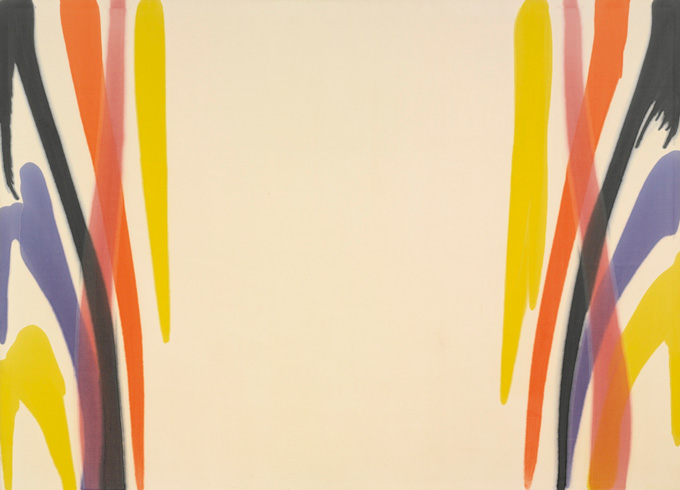Every piece of artwork is unique, and their meaning varies from one spectator to another, which lends artworks their unique attributes.
Here, we give you a better insight into different types of paintings, in order for you to acquaint yourself with the diverse styles of art, such as abstract, conceptual, and impression. The more accustomed you become with these art styles, the more easily you can differentiate among varying types of artworks, and of course make an informative decision about selecting artwork for yourself.
Abstract Art
Abstract art is art that does not attempt to represent an accurate depiction of a visual reality, but instead use shapes, colours, and forms to achieve its effect. Strictly speaking, the word abstract means to separate or withdraw something from something else, so this form of art is not representational, it can be based on a subject or may have no source at all in the external world.
Pioneers of ‘pure’ abstract painting were Kazimir Malevich and Piet Mondrian from about 1910–20, and since then abstract art has formed a central stream of modern art. In this form of artwork, an artist portrays his ideas and expresses his emotions by creating nonfigurative and intangible patterns in vibrant and bold hues.

Morris Louis

Kazimir Malevich

Piet Mondrian
Surrealism Art
In this form of artwork, an artist portrays different scenes and scenarios using metaphors to give surprising effect to their creation. French poet André Breton launched this movement in Paris in 1924, with it becoming an international movement including British surrealism which formed in 1936.
Key artists involved in the movement were Salvador Dalí, René Magritte and Joan Miró, who all experimented with ways of unleashing the subconscious, with the aim being to reveal the unconscious and reconcile it with rational life.

Paul Nash

Salvador Dalí
Conceptual Art
While creating a piece of Conceptual Art, an artist concentrates more on the concept of his idea than its artwork, and is generally found in sculpture and installation. It emerged as an art movement in the 1960s, and can look like almost anything. This is because, unlike a painter or sculptor who will think about how best they can express their idea using paint or sculptural materials and techniques, a conceptual artist uses whatever materials, and whatever form, is most appropriate for putting their idea across, ranging from a performance to a written description.
Artists associated with the movement are John Baldessari, Marcel Broodthaers, and Piero Manzoni. The art forms they used were often intentionally those that do not produce a finished object such as a sculpture or painting. This meant that their work could not be easily bought and sold, and did not need to be viewed in a formal gallery situation.

Joseph Kosuth
Cubism Art
Cubism was one of the most influential styles of the twentieth century. It is generally agreed to have begun around 1907 with Picasso’s celebrated painting Demoiselles D’Avignon which included elements of cubist style. It aimed to bring different views of subjects, usually objects or figures, together in the same picture, resulting in paintings that appear fragmented and abstracted.
By breaking objects and figures down into distinct areas or planes, the artists aimed to show different viewpoints at the same time and within the same space and so suggest their three-dimensional form. In doing so they also emphasised the two-dimensional flatness of the canvas, instead of creating the illusion of depth.

Georges Braque

Juan Gris
Impressionism Art
The origin of this form can be traced back to Paris in the early 1860s, where a group of artists painted an impression of an object on their canvases, rather than an exact imitation. Impressionism developed in France in the nineteenth century and is based on the practice of painting out of doors and spontaneously ‘on the spot’ rather than in a studio from sketches.
Main impressionist subjects were landscapes and scenes of everyday life, and this form of art was developed by Claude Monet, and other Paris-based artists. Other core artists of impressionism were Camille Pissarro, and Auguste Renoir, with Edgar Degas and Edouard Manet also often associated with the movement.

John Constablein
Pop Art
Pop art describes the work of artists working in the 1950s and 1960s in Britain and America who drew inspiration from popular and commercial culture. It began as a revolt against the dominant approaches to art and culture and traditional views on what art should be. Young artists felt that what they were taught at art school and what they saw in museums did not have anything to do with their lives or the things they saw around them every day.
Key pop artists include Andy Warhol, Roy Lichtenstein, Richard Hamilton, Peter Blake, and David Hockney, who turned to sources such as Hollywood movies, advertising, product packaging, pop music and comic books for their imagery.

Andy Warhol
By Eliza Scarborough















